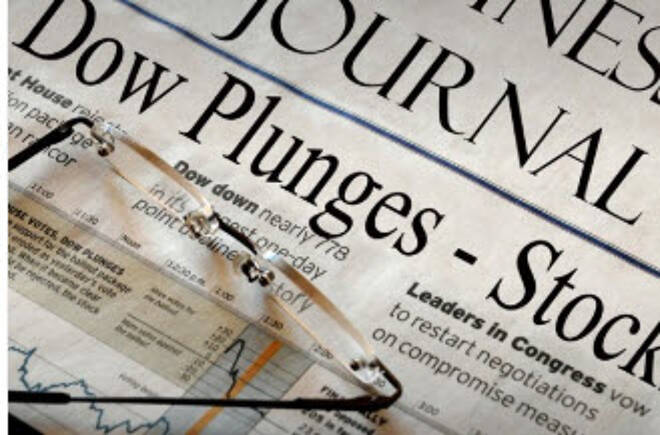Advertisement
Advertisement
US Stock Market Overview – Stock Tumble and the VIX surges Rising Above 35%
By:
Productivity continues to rise
US Stocks were hammed on Thursday ahead of Thursday’s payroll report. Large-cap tech stocks were the leaders on the way down as the selloff in equities was the worst since June. All sectors in the S&P 500 were lower, led down by Technology shares which tumbled more than 5%. The energy was the best performing sector in a down tape. US jobless claims came out better than expected, while productivity was also positive. Tesla and Apple which split at the beginning of the week were some of the biggest losers declining 9% and 8% respectively. The VIX volatilty index, which had been very subdued, surged more than 35% one of the largest single moves every, rising above 35% for the first time since June.
The VIX surges
The VIX had been rising in the days ahead of this selloff. Even as the market was rallying on Wednesday the VIX had been on the rise giving investors a signal that a selloff was in the making. The huge move up in the VIX is likely a sign that there might be more to come, as the next level of target resistance on the VIX is the June highs at 45 (another 29% higher).
US Jobless Claims Rose less than Expected
US Jobless claims rose by 881,000 last week, better than expected. Economists had been looking for a total of 950,000. Continuing claims fell sharply, dropping by 1.24 million to 13.254 million. The decline in the initial jobless claims rate was due to a change in the seasonal adjustment. According to the Labor Department claims would have remained elevated and unchanged using the old calculation.
US Productivity Climbs
U.S. productivity rose at a 10.1% rate in the Q2 according to the Labor Department. Hours worked fell by 42.9%, contributing to a 37.1% decline in output. The decline in output was also the biggest dropoff since the government began tracking the data in 1947. The government said labor costs rose 9%, slightly less than last month’s first estimate of 12.2.%. The original estimate for productivity was a 7.3% increase.
About the Author
David Beckerauthor
David Becker focuses his attention on various consulting and portfolio management activities at Fortuity LLC, where he currently provides oversight for a multimillion-dollar portfolio consisting of commodities, debt, equities, real estate, and more.
Advertisement
